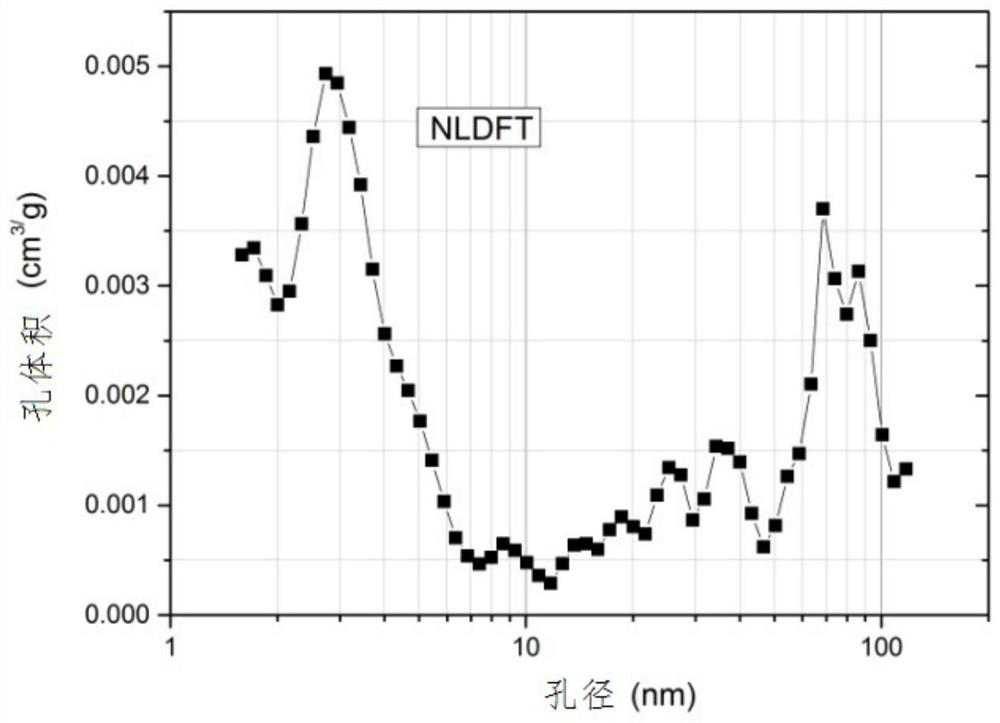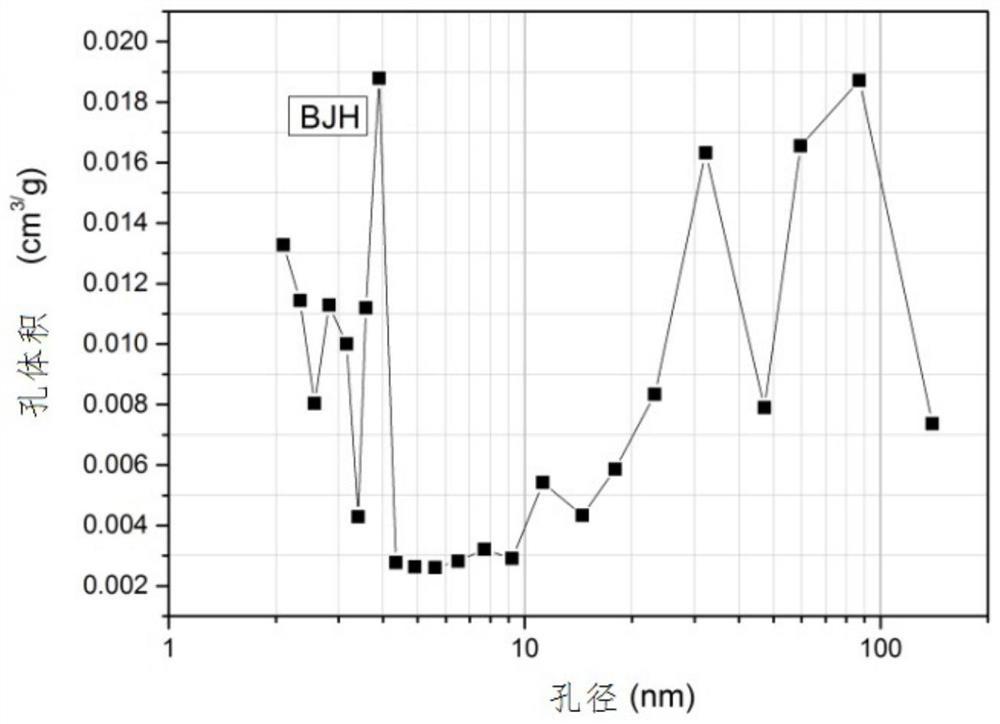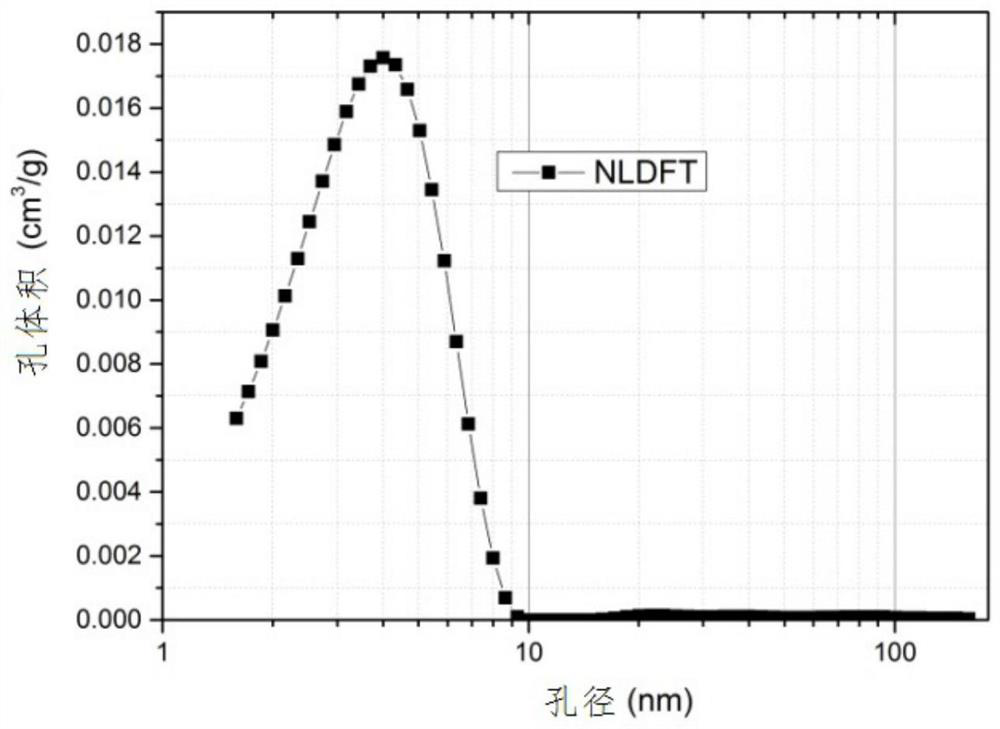Solid catalyst component for olefin polymerization and catalyst system
A solid catalyst and olefin polymerization technology, applied in the field of olefin polymerization, can solve the problem of low activity of olefin polymerization catalysts, and achieve the effect of wide molecular weight distribution characteristics
- Summary
- Abstract
- Description
- Claims
- Application Information
AI Technical Summary
Problems solved by technology
Method used
Image
Examples
Embodiment 1
[0116] A, preparation of solid catalyst component
[0117] In the reaction kettle that has been repeatedly replaced by high-purity nitrogen, 10.86g of anhydrous magnesium chloride, 249mL of toluene, 10.75g of epichlorohydrin, and 70.7g of tributyl phosphate were sequentially added, and the temperature was maintained at 60°C under 300rmp stirring for 2 Hour. Then 2.5 g of phthalic anhydride were added and the temperature at 60° C. was maintained for a further 1 hour. The solution was cooled to 15°C. In advance, 2.1g of surfactant (alcoholyzate of maleic anhydride-methacrylate copolymer) and 220mL of food grade No. 100 white oil (kinematic viscosity (40°C) at 100mm2 / s) were mixed uniformly to form a mixture. Within 40 minutes, 151 mL of titanium tetrachloride and the mixture were added dropwise at the same time. After the dropwise addition was completed, the mixture was stirred at 400 rpm for 1 hour. The temperature was then gradually raised to 80°C over 3 hours. Add 3 mL o...
Embodiment 2
[0122] A, preparation of solid catalyst component
[0123] In the reaction kettle that has been repeatedly replaced by high-purity nitrogen, 10.86g of anhydrous magnesium chloride, 272mL of toluene, 9.76g of epichlorohydrin, and 78g of tributyl phosphate were added in sequence, and maintained at 60°C for 2 hours under stirring at 300rmp . Then 3 g of phthalic anhydride were added and the temperature at 60° C. was maintained for a further 1 hour. The solution was cooled to 10°C. In advance, 3.2g of surfactant (alcoholyzate of maleic anhydride-methacrylate copolymer) and 240mL of food grade No. 100 white oil (kinematic viscosity (40°C) at 100mm2 / s) were mixed uniformly to form a mixture. Within 40 minutes, 135 mL of titanium tetrachloride and the mixture were added dropwise at the same time. After the dropwise addition was completed, the mixture was stirred at 400 rpm for 2 hours. The temperature was then gradually raised to 85°C over 3 hours. During the heating process, 3 ...
Embodiment 3
[0128] A, preparation of solid catalyst component
[0129] In the reaction kettle that has been repeatedly replaced by high-purity nitrogen, 10.86g of anhydrous magnesium chloride, 211mL of toluene, 11.5g of epichlorohydrin, and 68g of tributyl phosphate were added in sequence, and kept under stirring for 2 hours at a temperature of 60°C. Then 2.5 g of phthalic anhydride were added and the temperature at 60° C. was maintained for a further 1 hour. Cool the solution to 0°C, add 3 g of 9,9-dimethoxymethylfluorene, and continue stirring for 60 min. In advance, mix 2.5g of surfactant (alcoholyzate of maleic anhydride-methacrylate copolymer) with 260mL of food grade No. 100 white oil (kinematic viscosity (40°C) at 100mm 2 / s) Mix well to form a mixture. Within 40 minutes, 165 mL of titanium tetrachloride and the mixture were added dropwise at the same time. After the dropwise addition, the mixture was stirred at 400 rpm for 1 hour. Then gradually increase the temperature to 85°C...
PUM
| Property | Measurement | Unit |
|---|---|---|
| The average particle size | aaaaa | aaaaa |
Abstract
Description
Claims
Application Information
 Login to View More
Login to View More - R&D
- Intellectual Property
- Life Sciences
- Materials
- Tech Scout
- Unparalleled Data Quality
- Higher Quality Content
- 60% Fewer Hallucinations
Browse by: Latest US Patents, China's latest patents, Technical Efficacy Thesaurus, Application Domain, Technology Topic, Popular Technical Reports.
© 2025 PatSnap. All rights reserved.Legal|Privacy policy|Modern Slavery Act Transparency Statement|Sitemap|About US| Contact US: help@patsnap.com



